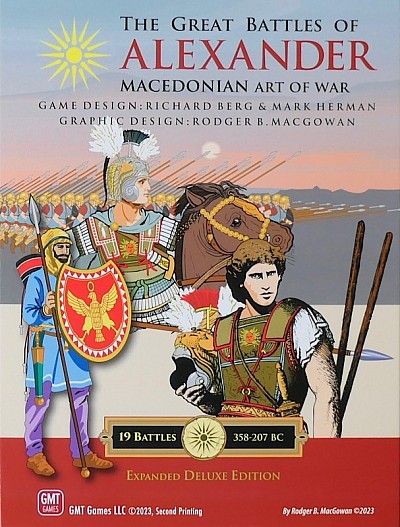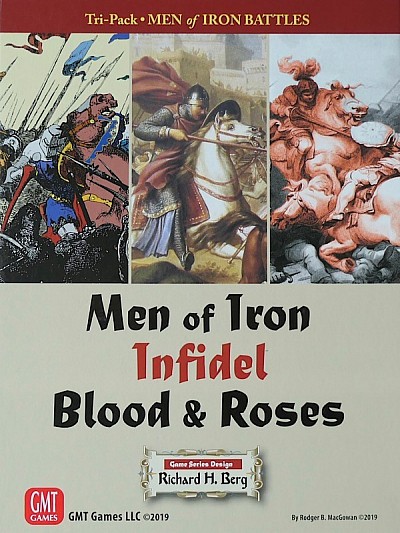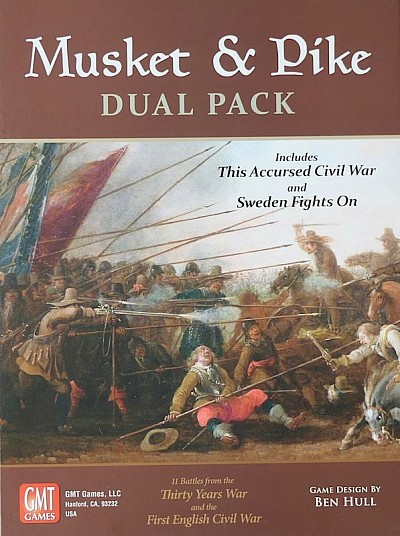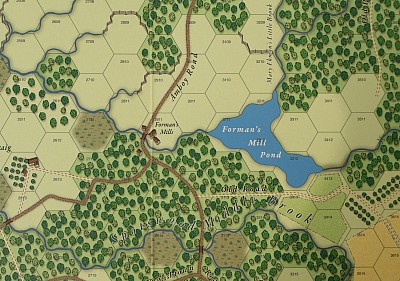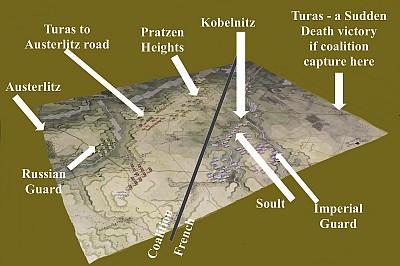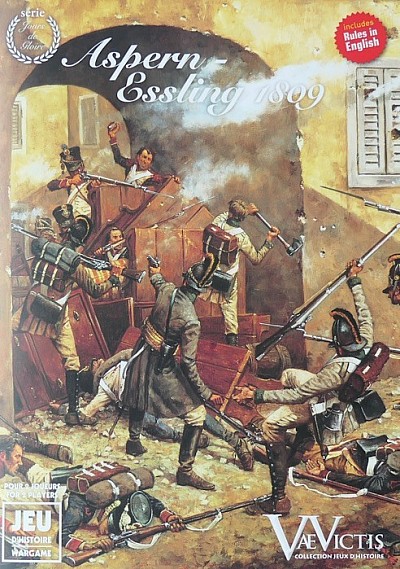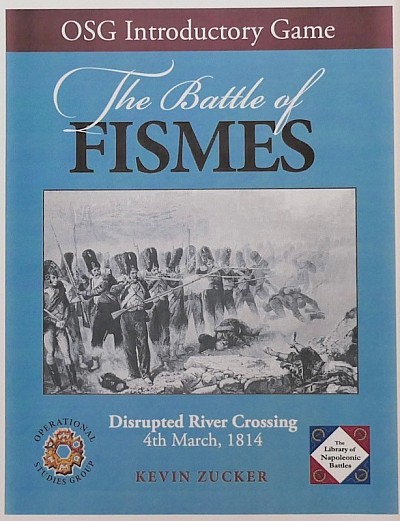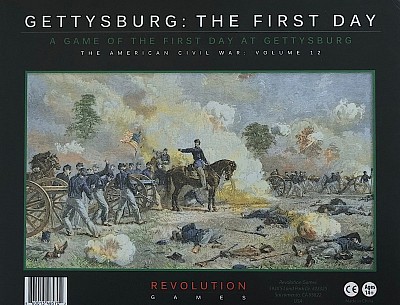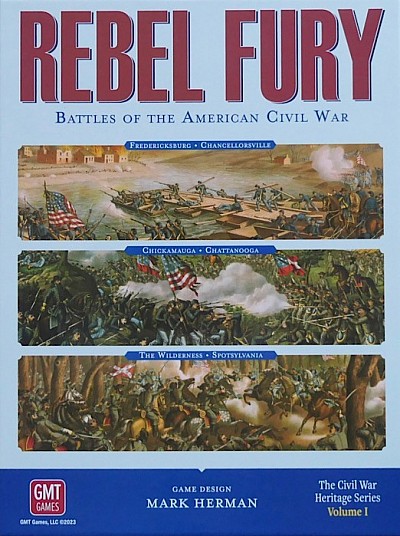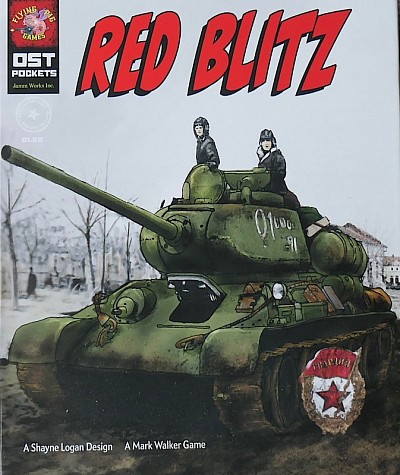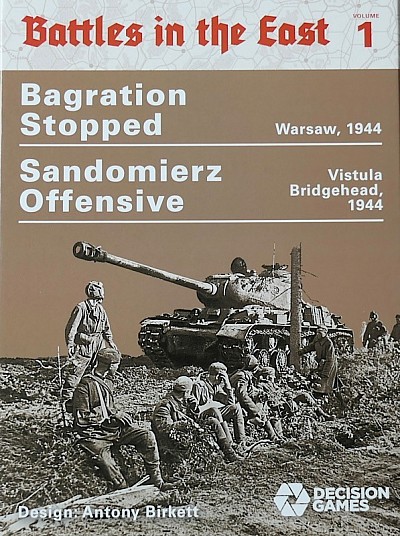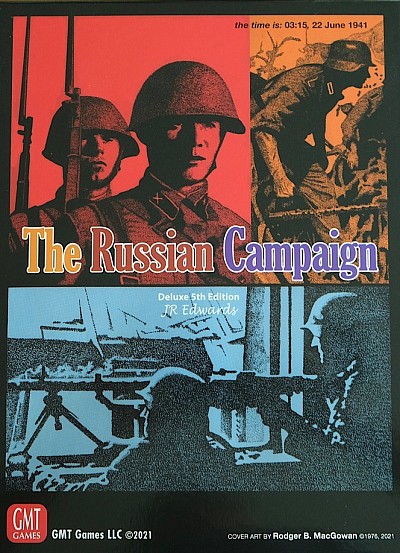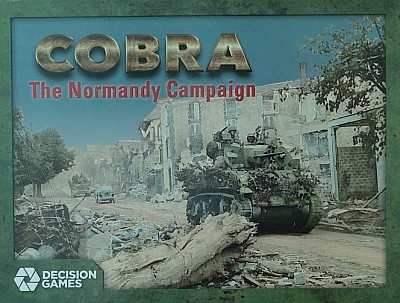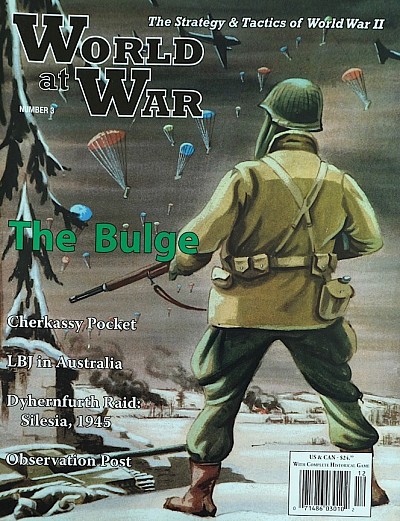Boardgame Systems
Great Battles of History
The Great Battles of History series started way back in the 90’s with the Alexander module, followed shortly by SPQR.
In 2019 SPQR was re-printed, but the original 5 battle package was expanded to include the various expansion sets that followed, to give us a new self contained package containing 14 battles from Heraclea 280 BC to The Muthol River 109 BC and includes the likes of The Trebbia, Cannae and Zama along the way.
The Deluxe version of Alexander has since been released, again packed with maps and scenarios.
It is quite a detailed system - enough that a few years later an alternative rulebook called ‘Simple Great Battles of History’ was produced, which was stream-lined to give players a choice of what level of emersion they prefer.
Between the new SPQR and Alexander reprints, I can put 33 different battles out on the table. Alexander does have a number of scenarios that are small enough to definitely be good two player single session games using the ‘Simple’ ruleset.
Men of Iron series
The Men of Iron series broadly covers medieval and early renaissance fighting. To date five modules have been produced. The first title, Men of Iron covers the re-emergence of infantry in the early 14th Century. Infidel covers the early Crusades period. Blood and Roses deals with the Wars of the Roses and finally Arquebus looks at the battles for Northern Italy 1495 - 1544.
just released, Norman Conquest looks at 1066 plus Norman action in Italy.
It is described as an easy play system, which breaks from the usual tradition of game turns and instead has continual play in which formations attempt to activate one at a time and when a formation fails, play flips over to the other player, who will likewise attempt to sequentially activate their own formations and so it continues back and forth until a victory can be called.
In 2020 GMT re-published the first three titles and bundled them together into a single ‘Tri-Pack’ collection of 20 individual battles from Dorylaeum 1097 to Bosworth 1485.
There are quite a few of the battles that definitely fit into the single session game that we seek. Most recently played was Tewkesbury, that had us both wanting to play it again in our following session.
Musket & Pike Series
This is another deluxe type publication by GMT in which two previous games have been brought back in one package.
It offers the original English Civil War module with a couple of extra battles added in, plus the ‘Sweden Fights’ on module, giving us some 30 Years War action as well.
There is a bit more complexity to this series than the other games shown on this page, but the rules do convey a good period feel and visually there is a connect as large formations are represented by a double sized counter that sits in two adjacent hexes.
I just need to get it to the table :-)
Battles of the American Revolution
I like to see situations unfold in a boardgame that could create a scenario to take to the figures table. Having just bought the Warlord Games Epic Revolution set (AWI), it brought into focus that my boardgame collection is shy when it comes to American War of Independence games, so I order the new Tri-Pack II package from Second Chance Games, which is a re-print of four previous single games, brought under one cover and given hard mounted boards.
The four battles are Germantown 1777, Monmouth 1778, Newtown 1779 and Oriskany 1777.
This is the ‘Battles of the American Revolution’ Series by GMT, which I have owned before and sold because I was not keen on the swinging results that a D10 combat system brought.
However, I might be changing my mind on such things. Eagles of France does something similar with 2D6, but I have always thought of that system as removing you, the commander, from micro managing the action. So we have the player giving out the general order that might be something like ‘attack that hill over there’ or ‘take that settlement’, but once those wheels are in motion, the commander (player) would have little influence over the actual fighting, the local colonels would be doing that and so perhaps swinging results better reflects that and the frustrations / hopes of the more senior command levels.
Anyway, it is a fine looking game, though it joins many fine games, all begging to be played!
As an aside, I recent bought the Monmouth Courthouse 1778 book from the Osprey Campaign Series, so that should help me put the meat on any scenario building bones that may happen.
Eagles of France
A Napoleonic series from Hexasim that so far boast four titles, Austerlitz, Quatre Bras, Ligny and waterloo.
The photo shows my initial set-up for the Austerlitz game.
One of the features of the game is that every corps level formation is given a destination order and until that order is changed, that is the destination that the formation will march to. It is not always easy to change orders and so that element of delay in getting new orders implemented is nicely modelled.
The combat table runs off a D10 and outcomes are never certain, which elevates the player to roll of army commander i.e. you can tell your troops where to go, but once there, you have much less control over what happens in combat - from your seat, you may see your forces breakthrough, struggle or retreat, another nice touch.
The series has been slow to grow, with the first game appearing in 2016. There is talk about the designer doing some self published work, the first game covering Eylau, but nothing has emerged yet.
Jours de Gloire
The origins of the Days of Glory system go back to Triumph and Glory by Richard Berg, published by GMT in 2000. Now developed by Frédéric Bey, the series has since been regularly showcased and updated across a number of publications over the years with around 45 battles covered to date.
Many of these titles have been long out of print, but are being brought back as new editions in the format of duel rules (French / English) in a folio presentation and die cut counters.
The heart of the system is that every formation has two chits that are placed in a draw bag. Chits are drawn one at a time and the formation indicated on the chit is activated. The last chit in the bag is ignored.
The consequence of the randomised activation is a dynamic game, with the uncertainty enhance by one formation losing out due to the last chit not getting drawn.
There are 12 pages of rules, but quite a bit of system is buried in there, bringing some complexity and these small footprint games can take a while to play, most certainly need more than one gaming session.
Over the past couple of years a few compilation sets have been released, which are beautifully rendered and just beg to be taken to the table. I am most keen to play their Austerlitz to compare it to the Eagles of France game shown above.
The Library of Napoleonic Battles
In the 70's Kevin Zucher brought us Napoleon's Last Battles, an SPI quad game covering the four major engagements that define Waterloo 1815. It sold zillions and has a place in the heart of many an old grognard boardgamer.
Kevin developed the game and under the banner of Operational Studies Group (OSG), produced a series that to date has covered over 80 napoleonic battles and these games are known as the Library of Napoleonic Battles.
The Fismes game (a 'what if' scenario) is an introductory module for anyone wanting to have a low cost dabble. It takes one of the smaller maps and one of the counter sheets from the 'Napoleon Retreats' module (circa 1814 campaign), plus a set of the rules, but the gamer has to download 8 other documents. This is the balance that helps keep the price of the intro package down. Also, the card deck (not a card driven game) is not supplied and not required.
One of the stand out aspects of these games is that as well as the battle scenarios, there are also scenarios that deal with the approach to battle and so the maps cover bigger areas than just that of the actual battle, allowing a game of manoeuvre. Perhaps your Waterloo, Borodino or Austerlitz will emphasize a different part of the potential battlefield.
Having played the Fismes introducory package, I wrote up some observational notes and posted them on the Battlefields & Warriors Blog.
LINK
https://battlefieldswarriors.blogspot.com/2025/04/the-battle-of-fismes-introduction-to.html
Blind Swords
The Blind Swords series was originally designed by Hermann Luttmann and published by Revolution Games. The product has now been split into a set of series rules and a playbook for each volume, and other designers have come on board, allowing the series to have now reached volume 12.
Vol 12 covers the first day at Gettysburg. Units are regiments and grouped within brigades. A chit draw system activates the brigades, bringing a natural chaos as the order of activation is most uncertain and there are also event chits placed into the chit draw that shake things up a bit.
I wanted this volume particularly for the opening hours of the battle, which is the part of the battle that interests me the most, with Heth probing the Chambersburg Pike and attacking across Willoughby's Run, pressing Buford's dismounted cavalry, who are desperate for support.
I am hoping that this will become the series that I rely upon for my ACW boardgaming.
I have been here before, having owned volumes I - IV, but each game had a single rulebook and the differences brought to each volume to model the batle, to my mind, became a bit difficult to track. By splitting the rules, so that the series part stays standard and any new rules and scenarios are placed into a playbook makes things much better in that regard.
The Civil War Heritage Series
A few years ago, Mark Herman designed a stand alone game for Gettysburg that took a different approach from most hex and counter systems.
Here the emphasis was on manoeuvre. The armies would start with counters face up, on their manoeuvre side. Play would move back and forth between players, moving one unit at a time. In manoeuvre mode, the units had a lot of freedom.
As soon as they came within close proximity of the enemy, they would flip over to battle mode and their movement would drop to a value of 1 hex at a time.
Combat was really bloody for the attacker, so the pre-game manoeuvre was important and brought into focus ... get your units into positions of advantage, close the enemy down and attack when advantage is on your side.
Soon after, there was a follow up game for Waterloo 1815. It was a further refinement of the system.
Then, in 2025, we saw the engine morph a little more with the release of Volume I of the ACW Heritage Series which delivered 6 games to us, they are pairings that share a similar area of map; Fredericksburg & Chancellorsville, Chickamauga & Chattanooga, The Wilderness & Spotsylvania.
They are highly playable, Chickamauga is just five turns long. A second volume is being developed.
Old School Tactical
Old School Tactical is published by Flying Pig and designed by Shayne Logan. It covers tactical WWII combat at a scale of 1 hex is 50 metres and each counter is a separate vehicle, weapon team or squad.
This is the box art from one of the expansions giving a ‘43/44 order-of-battle and six related scenarios. it also introduces the campaign system, using the full board and divides the board into sectors via the road net, clever and simple.
The first release covered the east front 1941 / 42 and has now become established with west front and Pacific following. Most recently the Italian theatre has been covered and I am told that early war (France / Poland) is on the designers drawing board.
The genre is potentially quite complicated with the hugely popular ASL, the epitome of detail and complexity being perhaps the system that all others are benchmarked against even to this day.
The OST system maintains a practical balance of having some nice depth while remaining a very playable game, so for example the off board artillery process only need a couple of paragraphs to explain them.
It is notable for its large playing board and top notch graphics.
Battles in the East series
Published by decision games, each game contains two campaigns.
The systems are a blend of other old school SPI systems, notably Panzergruppe Guderian, Army Group South and Cobra and their popularity looks like we will be seeing more than just the first four modules that were planned.
The game scales are 3 - 5 miles per hex with units representing regiments and divisions. The games are intended to be played in 2 - 4 hours, by two players (though the system is solo friendly), but the first two modules look to play at the higher end of that time estimation..
The games are using standard map sizes, mounted on board and 5/8 inch counters. There rules run to about 14 pages.
EDIT - Volume IV has just been released, so with 8 games so far, this looks a worthwhile series.
The Russian Campaign
Originally published by Avalon Hill and accepted by gamers at the time as part of the Avalon Hill ‘Classics”.
It had a small mounted board and half inch counters and my memory of it is that it was the only game that I have stayed up until 4 AM to complete play.
TGMT re-released it as a deluxe game and it has already gone out of print. It now has bigger counters and larger hexes and is a collaboration with the original designer.
The original rules are there in full, but there is also an advanced optional section for all the rules and variants that have been published in magazines etc since the original’s release.
There are smaller scenarios that can be played independently or they can be used as jump off points to play out the rest of the campaign game to the rest of the war.
It is at heart a players game.
Cobra from Decision Games
This latest edition of the game is here simply because Cobra was the first boardgame as a teenager that I was exposed to and played.
It was stumbled across in a game store, which itself was stumbled across and it was a moment of magic, from which a life long hobby emerged.
The original game was published in issue 68 of the S&T magazine in 1977.
TSR later did a boxed version and expanded the game out to include a second map that would allow for the D-Day invasion to be played as a pre-game before Cobra.
This edition that I now have was published in 2019 and is also the two map version. It includes a nice booklet about the campaign. So basically, this is a nostalgia purchase.
The Bulge (was called the Red One)
This was originally an SPI game system. This edition came out as a magazine game, given an update by Ty Bomba, so includes such things as his trademark Blood Bath (BB) combat result.
Since, Decision Games have most recently released a boxed version, which goes much closer back to the original game, but unfortunately for me has a half sized map and small counters, making the Bomba version more physically attractive and functional - though I am yearning for the latest edition as well, so who knows!
The game has only 5 pages of rules and can be a fast play game. Units are given very big movement allowances, which means the game is driven by the Allies needing to ensure that all road routes are closed down, while the Germans are looking for that gap, which can be exploited, with a unit that penetrates, often having enough movement left to exit the map and win!
That sort of pressure does in a subtle way put each player in the emotional shoes of the respective commanders, the Germans pushing hard to break through and the Allies stretched to desperately close down all avenues of advance.
